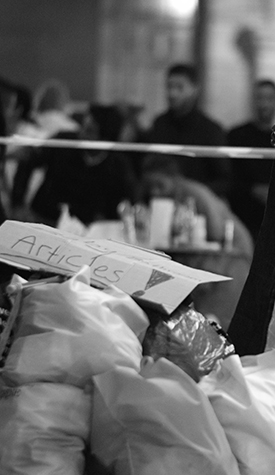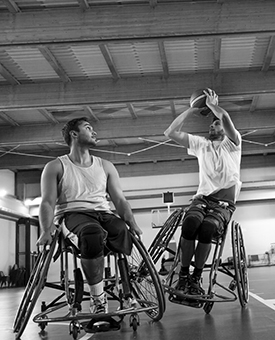Civil society in the Nordics
The Nordic experience is characterised by an upward spiral of development resulting from a close interconnection between a strong civil society and a strong state. The term ‘civil society’ was initially used in the Nordic countries as an alien concept to denote antagonism to the dominance of the welfare state. From the late 1990s, civil society came to be understood along more positive lines as a sphere of human engagement and self-empowerment. It has a strong association with the notion of democracy and refers to various social phenomena that have been prevalent in the Nordic countries since the nineteenth century, including popular movements and voluntary organisations.

The term ‘civil society’ only became common in Nordic political vocabulary in the 1990s. In the Nordic context it was introduced to challenge social democratic state interventionism and has therefore been used as a concept directed against the welfare state. International discourse with its esteemed understanding of civil society was hard to resist though, and a profound change in the Nordic understanding of the concept has taken place in the twenty-first century.
The concept of civil society as an analytical tool is also clearly applicable to the Nordic countries, with their tradition of strong popular movements and voluntary organisations, as well as their good performance in comparative studies on social capital. For the Nordic countries, any understanding of civil society that claims an antagonist relationship with the sphere of government and state will be inadequate due to their corporatist culture and structures.
High level of engagement
The level of membership and activity in various associations as well as the circulation of newspapers have become important indicators of the strength of civil society and social capital. In both of these aspects, the Nordic states belong to the group of countries with the most developed structures in the world. Due in part to their uniquely high (although now somewhat declining) involvement in trade unions, Nordic citizens also rank very highly in terms of per capita memberships in associations.
On average, Danes, Finns, Norwegians and Swedes hold memberships to two or three associations. Studies show that the level of Nordic citizens’ activity within these organisations and their voluntary commitment in general are also high. According to a 2015 Eurostat survey, about half of Norwegians and roughly two fifth of Danes, Finns, Icelanders, and Swedes were involved in formal voluntary activities – considerably more than in most other European countries. In all Nordic countries apart from Denmark, the level of informal voluntary activities was even much higher than this.
A prominent form of civil society engagement are activities related to sports, which tend to be included in the formal educational sector in some other parts of the world. A minority, 10 to 20% of Nordic citizens, do not participate in any organisation – a figure significantly lower than in most other countries.
The five Nordic countries have been in the top group in regard to newspaper circulation per capita. This is a traditional measure of civil society cohesion that may be losing significance, although it seems unlikely that social media offers a similarly broad integration function.

Both playing and volunteering for sports associations is a typical civil society past time in the Nordic countries.
Roots of civil society movements in the Nordic countries
Mass mobilisation, acceptance of self-responsibility and intense efforts in education characterised early civil society movements, which can be traced back to the nineteenth century. This portfolio played a decisive role in the creation of modern, democratic values in the Nordic countries. The nineteenth century was also known as the ‘age of associations’. The so-called popular movements included the Protestant Revivalist Movement, the Temperance Movement, the Agricultural Movement and the Labour Movement. They were all of major importance in the development of the Nordic countries and their political cultures. Co-operatives are also significant, in particular in the countryside.
Professionalism leading away from grassroots
Owing to their committed and well-educated members, the popular movements gradually achieved representation in public administration and parliament, slowly turning their presence into over-representation. To some degree, in a setting of pluralist competition, they used the state for the advancement of special interests, but characteristically they strived for societal consensus. While the other movements had their peak around World War I, the Labour Movement was strongest in the two decades after World War II.
In the decades following World War II, civil society organisations became more professional, centralised, and bureaucratic. This tendency enhanced their political influence, but arguably reduced their ability to fulfil some functions on a more grassroots level, for example, contribute to societal cohesion, and serve as organisations to identify with and recognise for members and the public at large.
Does civil society still exist?
In the twentieth century, leisure organisations gained increased significance, particularly sports clubs. Despite some ‘new’ ‘social movements’ dealing with peace, environmentalism and women’s rights, there has been a general shift from associations based on ideas and ideology to associations based on identity and a recreational profile.
In the twenty-first century, complaints have been voiced in the Nordic countries with regard to the increased fragmentation of civil society. According to another criticism, a paternalistic state leaves little room for self-determined local, regional, and national movements. A similar claim concerns a neoliberal state that is preoccupied with outsourcing its services and marketising the non-profit sector.
At the same time, current developments have also been interpreted as the establishment of a spontaneous and active network culture that exists side-by-side with the traditional, representatively organised culture of the popular movements. For example, when the arrivals of refugees peaked in the Nordic countries in 2015, individuals and existing organisations engaged broadly in managing the exceptional influx of people. There is, thus, reason to assume civil society’s continued vitality in the Nordic countries, despite the concern caused by some of its current transformations.
Further reading:
- L.S. Henriksen, K. Strømsnes and L. Svedberg, eds., Civic Engagement in Scandinavia: Volunteering, Informal Help and Giving in Denmark, Norway and Sweden (Cham: Springer, 2019).
- N. Götz, N., H. Haggrén, and M. Hilson, ‘Nordic cooperation in the voluntary sector’, in J. Strang, ed., Nordic cooperation: A European region in transition (London: Routledge, 2016).
- R. Alapuro and H. Stenius, eds., Nordic associations in a European perspective (Baden-Baden: Nomos, 2010).